Polyphosphate kinase 2: a novel determinant of stress responses and pathogenesis in Campylobacter jejuni
- PMID: 20808906
- PMCID: PMC2923150
- DOI: 10.1371/journal.pone.0012142
Polyphosphate kinase 2: a novel determinant of stress responses and pathogenesis in Campylobacter jejuni
Abstract
Background: Inorganic polyphosphate (poly P) plays an important role in stress tolerance and virulence in many bacteria. PPK1 is the principal enzyme involved in poly P synthesis, while PPK2 uses poly P to generate GTP, a signaling molecule that serves as an alternative energy source and a precursor for various physiological processes. Campylobacter jejuni, an important cause of foodborne gastroenteritis in humans, possesses homologs of both ppk1 and ppk2. ppk1 has been previously shown to impact the pathobiology of C. jejuni.
Methodology/principal findings: Here, we demonstrate for the first time that the deletion of ppk2 in C. jejuni resulted in a significant decrease in poly P-dependent GTP synthesis, while displaying an increased intracellular ATP:GTP ratio. The Deltappk2 mutant exhibited a significant survival defect under osmotic, nutrient, aerobic, and antimicrobial stresses and displayed an enhanced ability to form static biofilms. However, the Deltappk2 mutant was not defective in poly P and ppGpp synthesis suggesting that PPK2-mediated stress tolerance is not ppGpp-mediated. Importantly, the Deltappk2 mutant was significantly attenuated in invasion and intracellular survival within human intestinal epithelial cells as well as in chicken colonization.
Conclusions/significance: Taken together, we have highlighted the role of PPK2 as a novel pathogenicity determinant that is critical for C. jejuni survival, adaptation, and persistence in the host environments. PPK2 is absent in humans and animals; therefore, can serve as a novel target for therapeutic intervention of C. jejuni infections.
Conflict of interest statement
Figures
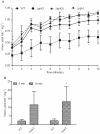
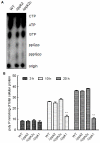


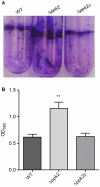

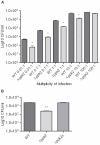
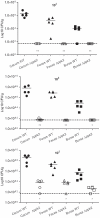
Similar articles
-
Polyphosphate kinase 1 is a pathogenesis determinant in Campylobacter jejuni.J Bacteriol. 2007 Nov;189(22):8099-108. doi: 10.1128/JB.01037-07. Epub 2007 Sep 7. J Bacteriol. 2007. PMID: 17827292 Free PMC article.
-
Importance of polyphosphate kinase 1 for Campylobacter jejuni viable-but-nonculturable cell formation, natural transformation, and antimicrobial resistance.Appl Environ Microbiol. 2009 Dec;75(24):7838-49. doi: 10.1128/AEM.01603-09. Epub 2009 Oct 16. Appl Environ Microbiol. 2009. PMID: 19837830 Free PMC article.
-
Polyphosphate kinases modulate Campylobacter jejuni outer membrane constituents and alter its capacity to invade and survive in intestinal epithelial cells in vitro.Emerg Microbes Infect. 2015 Dec 30;4(12):e77. doi: 10.1038/emi.2015.77. Emerg Microbes Infect. 2015. PMID: 26714783 Free PMC article.
-
Polyphosphate and associated enzymes as global regulators of stress response and virulence in Campylobacter jejuni.World J Gastroenterol. 2016 Sep 7;22(33):7402-14. doi: 10.3748/wjg.v22.i33.7402. World J Gastroenterol. 2016. PMID: 27672264 Free PMC article. Review.
-
Inorganic polyphosphate in the origin and survival of species.Proc Natl Acad Sci U S A. 2004 Nov 16;101(46):16085-7. doi: 10.1073/pnas.0406909101. Epub 2004 Nov 1. Proc Natl Acad Sci U S A. 2004. PMID: 15520374 Free PMC article. Review.
Cited by
-
Polyphosphate Kinase 2 (PPK2) Enzymes: Structure, Function, and Roles in Bacterial Physiology and Virulence.Int J Mol Sci. 2022 Jan 8;23(2):670. doi: 10.3390/ijms23020670. Int J Mol Sci. 2022. PMID: 35054854 Free PMC article. Review.
-
Colonization factors of Campylobacter jejuni in the chicken gut.Vet Res. 2011 Jun 29;42(1):82. doi: 10.1186/1297-9716-42-82. Vet Res. 2011. PMID: 21714866 Free PMC article. Review.
-
Polyphosphate-mediated modulation of Campylobacter jejuni biofilm growth and stability.Virulence. 2014 Aug 15;5(6):680-90. doi: 10.4161/viru.34348. Virulence. 2014. PMID: 25127528 Free PMC article.
-
Transcriptome analysis of Campylobacter jejuni polyphosphate kinase (ppk1 and ppk2) mutants.Virulence. 2015;6(8):814-8. doi: 10.1080/21505594.2015.1104449. Epub 2015 Nov 5. Virulence. 2015. PMID: 26537695 Free PMC article. No abstract available.
-
Effect of environmental stress factors on the uptake and survival of Campylobacter jejuni in Acanthamoeba castellanii.BMC Microbiol. 2012 Oct 11;12:232. doi: 10.1186/1471-2180-12-232. BMC Microbiol. 2012. PMID: 23051891 Free PMC article.
References
-
- Allos BM. Campylobacter jejuni infections: update on emerging issues and trends. Clin Infect Dis. 2001;32:1201–1206. - PubMed
-
- Hughes R. Campylobacter jejuni in Guillain-Barré syndrome. Lancet Neurol. 2004;3:644. - PubMed
-
- Kalischuk LD, Buret AG. A role for Campylobacter jejuni-induced enteritis in inflammatory bowel disease? Am J Physiol Gastrointest Liver Physiol. 2010;298:G1–G9. - PubMed
Publication types
MeSH terms
Substances
LinkOut - more resources
Full Text Sources

